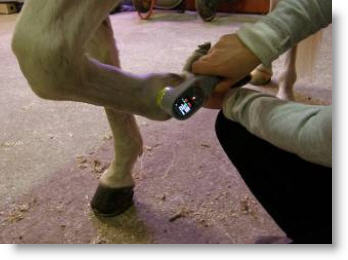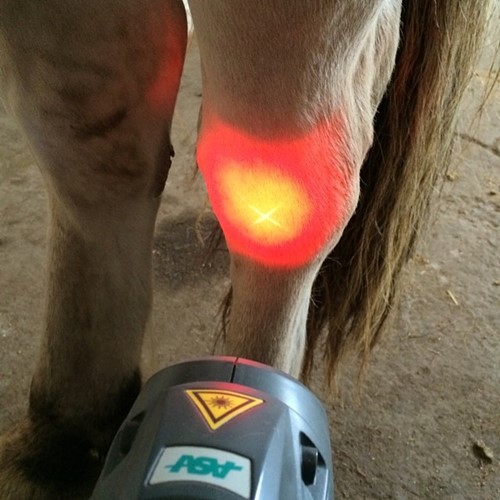Assessing the Performance of Laser Therapy in Equine Therapy for Injury Rehabilitation
The analysis of laser therapy's efficiency in equine injury recovery hinges on several variables, consisting of recuperation time, pain mitigation, and cells regrowth. Medical researches suggest significant enhancements in conditions like tendonitis and osteo arthritis, associated to enhanced mobile function and raised ATP production. Veterinarians regularly observe exceptional end results with laser therapy compared to traditional approaches, positioning it as a crucial aspect in equine treatment. The need for continuous surveillance and customized treatment plans can not be overemphasized. What specific medical evidence sustains these insurance claims, and how do veterinarians execute these protocols in method?
Understanding Laser Therapy
Laser therapy has become a critical device in veterinary medication, especially in the treatment of equine conditions. Known for its non-invasive nature and effectiveness, laser treatment entails the application of details wavelengths of light to boost tissue repair work and minimize inflammation. This restorative modality is significantly preferred for its capacity to speed up the recovery procedure in equines suffering from a variety of bone and joint injuries and persistent conditions.
The primary device behind laser treatment is its capacity to improve mobile functions. In addition, laser therapy advertises vasodilation, improving blood circulation and oxygen shipment to damaged cells, hence speeding up recuperation.
In equine medicine, laser therapy is particularly advantageous for conditions such as tendonitis, osteoarthritis, and wound healing. The technique is admired for its pain-relieving buildings, permitting steeds to gain back wheelchair and function more swiftly. Vets also value its very little side results compared to various other therapy methods, making it a reliable and safe alternative for equine treatment.

Exactly How Laser Treatment Functions

Upon absorption, these photons activate a collection of biochemical modifications, enhancing mitochondrial feature and causing raised adenosine triphosphate (ATP) production. This rise in ATP accelerates cellular metabolic rate, promoting tissue fixing and regeneration. Furthermore, laser treatment regulates inflammatory reactions by impacting cytokine degrees and minimizing oxidative stress and anxiety, thereby relieving pain and swelling.
Another considerable facet of laser therapy is its function in improving microcirculation. The treatment advertises vasodilation, boosting blood circulation and oxygen delivery to broken cells (Equine Therapy). This helps with the removal of mobile visit this web-site particles and sustains the expansion of fibroblasts and collagen synthesis, vital for injury healing
Professional Proof
The effectiveness of laser therapy in equine therapy has actually been corroborated with numerous scientific researches, showcasing its restorative possible throughout an array of problems. A research study carried out by Turner et al. (2012) demonstrated that steeds treated with low-level laser therapy (LLLT) for tendon injuries displayed this accelerated recovery contrasted to those getting standard treatments.
Likewise, study by Johnson and coworkers (2015) concentrated on equine muscle mass injuries, exposing that laser therapy considerably sped up muscle fiber regrowth and reduced muscular tissue stiffness. Clinical evaluations have revealed that laser therapy can relieve persistent problems such as osteo arthritis.
Veterinarian Insights

Vets additionally appreciate the adaptability of laser treatment. It can be employed for a vast array of conditions, from surface wounds to much deeper musculoskeletal injuries. Dr. Emily Brown highlights its energy in dealing with conditions like tendonitis and osteo arthritis, where standard treatments often fall brief. She aims out that laser treatment can be customized to the specific needs of each horse, making sure optimal results.
Additionally, vets value the capacity to incorporate laser treatment with various other therapy modalities. This multimodal approach can enhance overall therapy effectiveness, offering an extensive service for equine rehabilitation. Such recommendations from experienced professionals emphasize the expanding acceptance and application of laser treatment in equine medicine.
Practical Considerations
A crucial aspect of carrying out laser therapy in equine therapy entails understanding the useful factors to consider that guarantee its efficiency and safety and security. First and foremost, it is essential to choose the browse around this site appropriate laser device, as numerous types differ in wavelength, power, and infiltration depth. Equine Therapy. Veterinarians must be skilled in these specifications to customize therapy protocols successfully to each injury type
Furthermore, the frequency and duration of laser treatment sessions require careful planning to maximize restorative advantages while minimizing any potential damaging results. Regular monitoring of the steed's feedback to therapy can assist required modifications in the therapy program. Establishing a secure and regulated setting throughout treatments is likewise necessary to avoid unintended direct exposure to laser emissions, which could harm both the steed and the handler.
Educating and qualification of workers administering laser treatment are extremely important to make sure appropriate technique and to promote security standards. Additionally, keeping exact records of each session, consisting of laser setups and observed results, is crucial for assessing the general efficiency of the treatment and for making data-driven decisions.
Conclusion
Laser therapy has become a reliable method in equine injury rehabilitation, providing substantial advantages in recovery time, discomfort alleviation, and tissue healing. Clinical research studies emphasize significant enhancements in problems such as tendonitis and osteo arthritis, associated to improved mobile feature and increased ATP production. Vet observations prove these searchings for, highlighting premium end results compared to standard treatments. For optimal outcomes, constant monitoring and customized treatment methods remain necessary in leveraging the full potential of laser treatment in equine treatment.